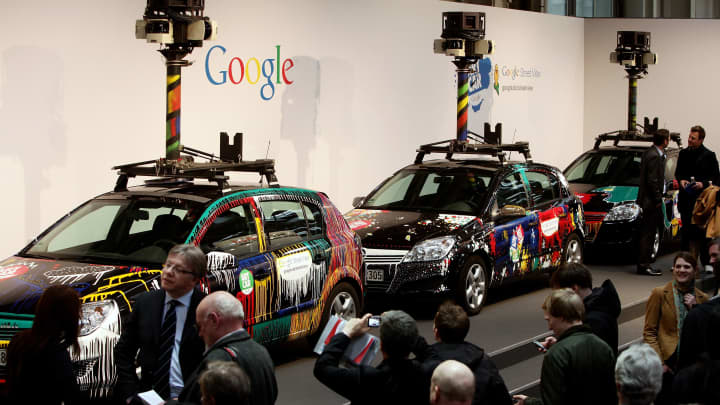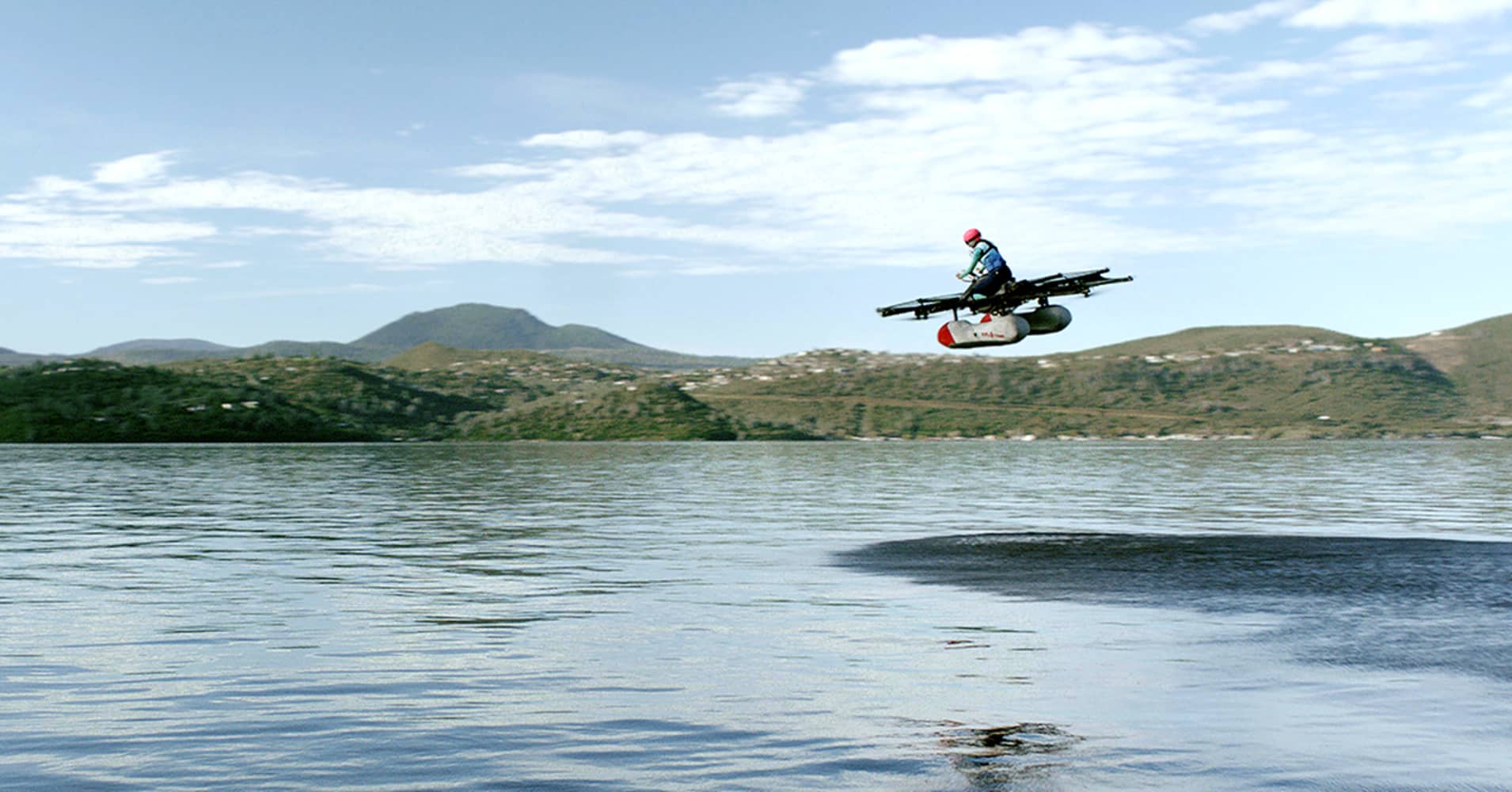Picture this: You’re the founder of a secretive research and development lab at one of the hottest companies in the world, likely paid a handsome salary for the privilege, and your name is in the media two to three times a week. Your role is to come up with life-changing ideas, and your biggest one to date is a car that drives itself. You’ve been called one of the world’s most creative people and you’re probably one of the cleverest too, having been a Stanford professor.
And then, at the top of your career, you give it all up.
The founder is scientist Sebastian Thrun, and the R&D facility is Google X, the lab that was so secret that hardly anyone at Google knew about it. Thrun ran X from 2010 until 2012, and among its creations are the self-driving car (now known as Waymo), Project Loon, which aims to bring the internet to remote areas via hot-air balloon, and Google Glass, which businesses are now starting to use after it was discontinued as a consumer product in 2015.
Thrun left Google X because his vision for humanity was even bigger than what he felt he could do there.
Sebastian Thrun spent part of his teenage years lying in bed in his home town of Solingen, Germany programming a TI-57 calculator, a device produced by Texas Instruments in 1977 that had around 50 programming steps that were erased each time it was switched off.
Every day he had a new challenge. “At the time it was intriguing that there was something around me in my, my world, when I told it to do something, it actually did it, right?” he told CNBC in an interview for the new series “The Brave Ones”. “Because everyone else around me, my parents, my siblings, and so on, I would say: ‘Do this,’ and they would never do it.”
Beyond allaying his adolescent frustration, the TI-57 also set Thrun on a path where his programming skills would let him do the kinds of things boys and girls dream about: designing robots, winning science competitions and appearing on television.
But, after gaining a PhD in computer science and statistics from the University of Bonn in Germany, becoming a tenured professor at Stanford, numerous academic awards and accolades in the media, and his trailblazing stint at Google X, his ambitions would eventually become more worldly and altruistic: He wanted everyone to have the chance to learn the skills he had, wherever they were.
Self-driving cars and Google’s secret lab
Sebastian Thrun lost his best friend in a car accident aged 18. This tragic moment inspired him to dedicate his life to saving the 1 million people a year who die on the road, by inventing a car that could drive itself - better than a human could - he told a TED audience in 2011.
And it was while he was an associate professor at Stanford that the world sat up and noticed him. Thrun led a team that created a self-driving car, winning the 2005 DARPA Grand Challenge, a 130-mile course across the Mojave Desert. It proved pivotal as Google founder Larry Page spotted Thrun at the event, disguising himself to avoid attention.
“Larry came to the race itself and … came disguised with, like, a hat and sunglasses so he wouldn't be bothered by everybody. But … he had a keen interest in this. Larry has been a believer in this technology for much longer than I even knew. And so was Sergey (Brin). And they really want to understand what's going on,” Thrun said.
A later iteration of the car had cameras attached to its roof, so the team could review its progress each day, leading almost by accident to the development of Google Street View.
“We realized the video’s actually amazing. And we went to Google and said ‘we’d love to help you build Street View.’ And we kind of ended up – felt like an acquisition of a little start-up company, kind of Stanford transitioning into Google where me and four of my grad students then became Street View enthusiasts."
“And we built up Street View and with a singular vision to photograph every street in the world.”
Street View became the first project within the secret Google X. “We had a separate building that no one knew about. At least for a year and a half, no one in Google had a clue we existed,” Thrun said.

Inside the mind of Sebastian Thrun
Tap or click a card to reveal the answer
Teaching the world to code
Thrun’s 2011 TED talk was to be a light bulb moment. Not because of the response to his own presentation (which has now been watched online nearly 2.4 million times) but because he met someone at TED who completely inspired him. That person was Sal Khan, whose talk on using video to reinvent education sparked a series of events that would lead Thrun to leave his glamorous Google X role.
“I listened to a young fellow named Sal Khan who started (the) Khan Academy. He was, like, an investment banker, had no teaching credentials. But his videos teaching just went viral. He had, like, tens of millions of students. And I was sitting at Stanford with my typical class of, like, 50 and thinking, ‘God damn it. I can do that’.”
So Thrun put his artificial intelligence class online and 160,000 students ended up taking it, of which 23,000 graduated. But the top-performing students weren’t from Stanford, he found.
“When they graduated, we stack ranked (evaluated) those students with the Stanford students. We give them the same exam, the same homework assignment. So you could really compare them. The top 412 students were not at Stanford. The single best Stanford student was number 41.”
Thrun came to the realization that making education available to everyone – not just the elite few – could help people from all over the world.
“It was kind of, like, a calling to me. I hadn't anticipated that I'd become an online instructor or CEO of a company, a founder of a company that, that wants to democratize education. But when I realized that with this one class I had more teaching impact in this specific quarter than, like, the entire academic field combined in the entire world, I realized, ‘Oh my God. Something has to be done’,” he said.
And so, in 2012, Thrun left Google X, and Udacity was born.
Nanodegrees, self-driving cars and the future
People might say they want to change the world, but with Sebastian Thrun, many actually believe him.
His vision is for people to have an education, wherever they are in the world. “I have this dream that if we can make education globally, universally available. It doesn’t matter if you live in the Middle East, or in South America, you get the same education everywhere, then we can completely transform the world,” he told an audience at Udacity’s Intersect conference in March.
Udacity now has 4 million registered users, making it the fifth largest online education provider in the world, according to online course catalog Class Central. But it took several years of ups and downs to get where it is today. Having focused on teaching university degrees online and getting 160,000 students to take the first course, the numbers started dwindling, with sign-ups for one course only numbering 5,000.
And not only did the numbers not work out, but the media had a field day, with the New York Times calling the original business model “a flop” and U.S. teacher unions criticizing him for offering university courses for just $150.
“We had a very hard pivot, in venture words, two years ago where we decided to say we're not focusing on replacing colleges, we're focusing on lifelong learning,” Udacity’s Chief Marketing Officer Shernaz Daver told “The Brave Ones”.

Udacity’s new model, the “nanodegree”, provides short training courses for tech industry careers including robotics, digital marketing and self-driving car engineering, and it has partnered with businesses including IBM, Mercedes-Benz and Google.
Beyond Udacity, Thrun is pushing new boundaries, working with Larry Page to launch a flying car last month with start-up Kitty Hawk, and using technology to make nutritious fast-food. This is Thrun’s new obsession. “I'm in my free time right now completely obsessed with trying to make the world's most amazing, nutritious, and delicious dinner in three and a half minutes,” he said.
“We have technology that can do it. And we've given food samples to well-renowned food critics that in most parts love our food.”
So can Sebastian Thrun, teenage programmer, scientist, inventor, educator and server of humanity add feeding the world to his CV? Watch this space.
Credits:
Writer: Lucy Handley
Design & code: Bryn Bache
Editor: Matt Clinch
Producer, The Brave Ones: Kevin Kane

